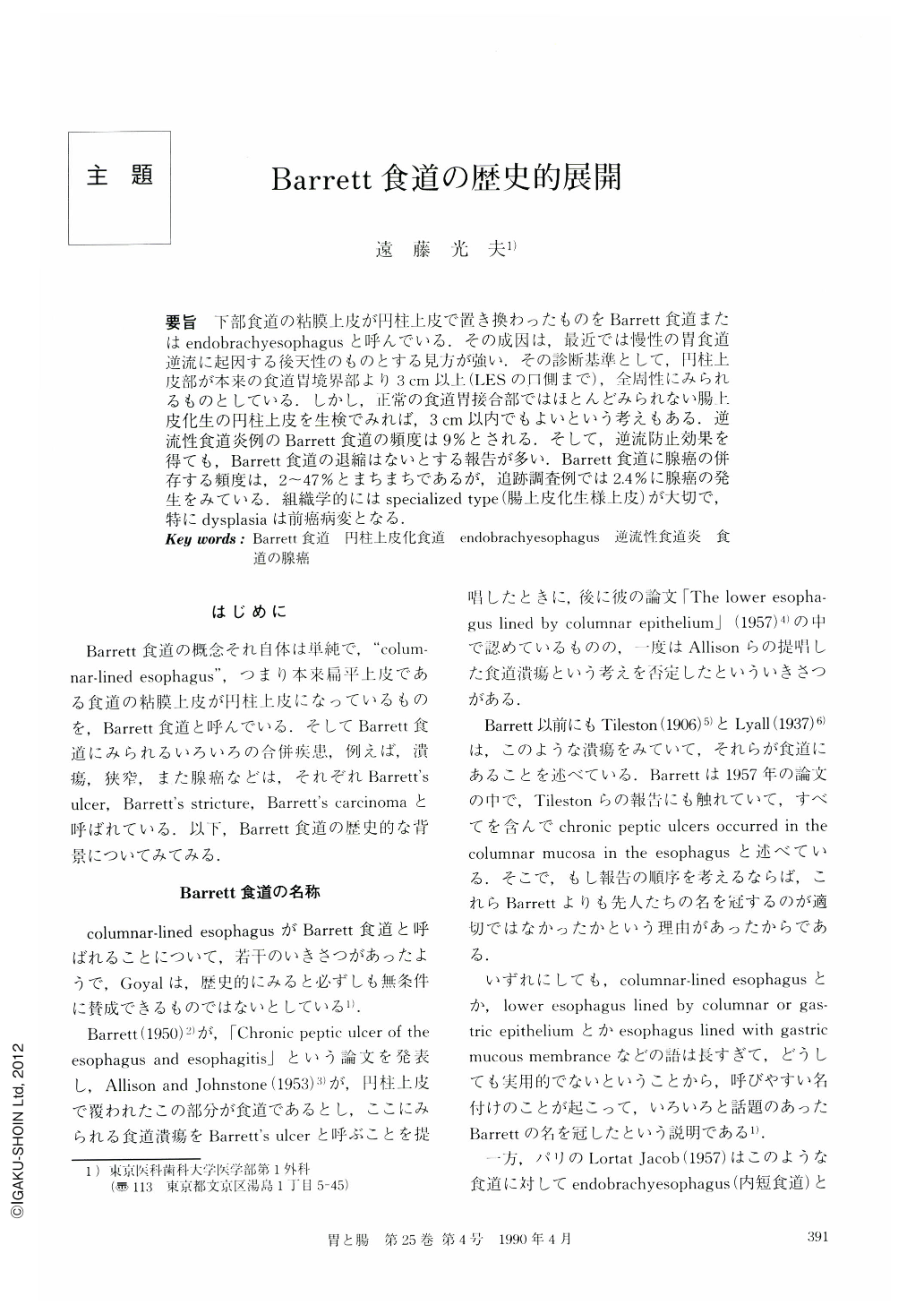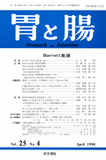Japanese
English
- 有料閲覧
- Abstract 文献概要
- 1ページ目 Look Inside
要旨 下部食道の粘膜上皮が円柱上皮で置き換わったものをBarrett食道またはendobrachyesophagusと呼んでいる.その成因は,最近では慢性の胃食道逆流に起因する後天性のものとする見方が強い.その診断基準として,円柱上皮部が本来の食道胃境界部より3cm以上(LESの口側まで),全周性にみられるものとしている.しかし,正常の食道胃接合部ではほとんどみられない腸上皮化生の円柱上皮を生検でみれば,3cm以内でもよいという考えもある.逆流性食道炎例のBarrett食道の頻度は9%とされる.そして,逆流防止効果を得ても,Barrett食道の退縮はないとする報告が多い.Barrett食道に腺癌の併存する頻度は,2~47%とまちまちであるが,追跡調査例では2.4%に腺癌の発生をみている.組織学的にはspecialized type(腸上皮化生様上皮)が大切で,特にdysplasiaは前癌病変となる.
The columnar epithelium-lined esophagus is called "Barrett's esophagus". Norman Barrett described this condition in a patient with peptic ulcer of the esophagus and esophagitis in 1950. He initially thought that this was a congenital intrathoracic stomach, but Allison and Johnstone (1953) pointed out that this gastric mucosa-lined organ was in fact esophagus. It is now generally accepted that Barrett's esophagus is an acquired condition due to chronic, repetitive gastroesohageal reflux. There are some Literatures demonstrating Barrett's esophagus in as many as 10% of the patients with reflux esophagitis. The frequency of this condition seems to be higher in Caucasians than in Orientals or negroids. Barrett's esophagus has a potential of significant morbidity such as severe stricture and ulceration. Definitive diagnosis is made by histological examination of endoscopically obtained specimen. Prevention of esophageal reflux is the goal both medical and surgical treatments. Metaplastic change in most cases, however, is reported to be irreversible. Dysplasia has an ominous prognostic significance, thus requiring frequent and careful surveilance.

Copyright © 1990, Igaku-Shoin Ltd. All rights reserved.


